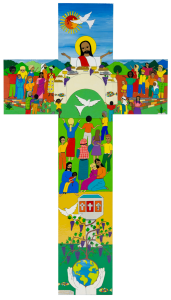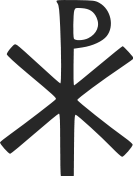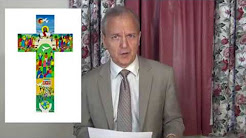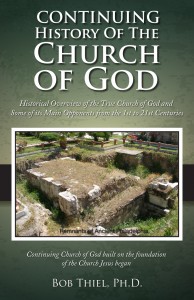COGwriter
A reader tipped me off to the following:
25 April 2018
German state orders crosses mounted in government buildings
Bavaria’s state premier, Markus Söder, has ordered that crosses be hung up in all state buildings in the southern German state. He called the move an “avowal of Bavarian identity.”
Bavaria’s freshly-sworn-in state premier has stamped a Christian identity on the state’s public buildings as one of his first acts in office.
Markus Söder, of the Christian Social Union (CSU), conservative sister-party to Angela Merkel’s Christian Democratic Union (CDU), on Tuesday announced that a cross would be hung in every public building from June 1. …
Söder went on to claim that the directive was not a violation of constitutional rules about religious neutrality, because it was a symbol of “Bavarian identity,” rather than religion. Bavaria remains a majority Christian state, and one of the most Catholic regions in the country. In 2016, 50.5 percent of the population were categorized as Roman Catholic, and another 18.8 percent as Protestant. http://www.dw.com/en/german-state-orders-crosses-mounted-in-government-buildings/a-43519541
25 April 2018
The German state of Bavaria has ordered Christian crosses to be placed at the entrances to its public buildings.
Premier Markus Söder said crosses should not be seen as religious symbols but as a “clear avowal of our Bavarian identity and Christian values”.
But opponents said the ruling Christian Social Union (CSU) was trying to score points ahead of October’s election amid fears of a rise of the far right.
Crosses are compulsory in public school classrooms and courtrooms.
The decree, which comes into effect on 1 June, will not affect municipal and federal government buildings in the predominantly Roman Catholic southern state.
“The cross is a fundamental symbol of our Bavarian identity and way of life,”Mr Söder said in a statement (in German). “It stands for elemental values such as charity, human dignity and tolerance.”
He denied the measure violated constitutional rules about religious neutrality and, on Twitter, said he had placed a cross in the lobby of the state chancellery in Munich. http://www.bbc.com/news/world-europe-43892329
While crosses were NOT an early Christian symbol, Greco-Romans have used them extensively since the fourth century. Crosses have been used as a political and military symbol since at least that far back.
As regular readers of this COGwriter Church of God News page are aware, I have long suspected that a cross is likely to be a symbol used by the Beast and Antichrist.
This is not just my idea, but shortly after the Greco-Romans really adopted and pushed crosses, Christians have presented opposition to them.
For example, in the article on the Paulicians in The Catholic Encyclopedia (bolding mine) states:
They honoured not the Cross, but only the book of the Gospel…They were Iconoclasts, rejecting all pictures… The whole ecclesiastical hierarchy is bad, as also all Sacraments and ritual. They had a special aversion to monks…Since Gibbon the Paulicians have often been described as a survival of early and pure Christianity, godly folk who clung to the Gospel, rejecting later superstitions, who were grossly calumniated by their opponents…
…the Cathari also renounced priestly vestments, altars, and crosses as idolatrous. They called the cross the mark of the beast, and declared it had no more virtue than a ribbon for binding the hair. (Fortescue, Adrian. Paulicians. The Catholic Encyclopedia. Vol. 11. Nihil Obstat. February 1, 1911. Remy Lafort, S.T.D., Censor. Imprimatur. +John Cardinal Farley, Archbishop of New York. New York: Robert Appleton Company, 1911. 23 May 2010 <http://www.newadvent.org/cathen/11583b.htm>)
So, groups that traced their history to original early Christianity (see also Continuing History of the Church of God) did not use crosses and further claimed that the cross was a mark of the beast.


Salvadorian Lund Cross and Labarum Cross
Does this claim seem too far-fetched for modern times?
Consider the following report from Ecumenical News:
A Salvadoran Cross that is a now an icon of Christian unity was dedicated and placed in the World Council of Churches’ Chapel in Geneva, Switzerland on the first day of the Week of Prayer for Christian Unity.
The 2-metre high cross from Salvador has become known as the Lund Cross from the Swedish city where Lutherans and Roman Catholics met at the end of 2016 to commemorate the 500th Reformation anniversary.
“On behalf of the World Council of Churches, we receive this cross as a gift of communion,” said World Council of Churches general secretary, Rev. Olav Fykse Tveit at the ceremony.
“May the historical step that it symbolizes reminds us that Christ’s cross transforms our conflict into communion, and we are reconciled as one creation, joined by the one sprit of God and Creator. Behold the life-giving cross.”
A sign of continuous commitment with the one ecumenical movement the Lund Cross was created for that joint Catholic-Lutheran Commemoration of the Reformation in Lund and Malmö, Sweden, on 31 October 2016.
The week of prayer for its part is traditionally celebrated between 18-25 January, between the feasts of St Peter and St Paul. …
Cardinal Kurt Koch, president of the Pontifical Council for Promoting Christian Unity in his 18 January sermon in the chapel spoke on the message of the cross which is the work of Salvadoran artist Christian Chavarría Ayala, a man who has lived in the shadow of death squads in his country.
The cross is rich with symbols, and shows a baptismal font, branches of the true vine, and Jesus inviting people of all nations to share bread and wine.
The Lund Cross was painted by Ayala, a Lutheran from El Salvador in the typical colorful style of his country.
“People create crosses from their own experiences,” said the artist, who as a child lived through the Salvadoran civil war and grew up in a refugee camp in Honduras. …
In his sermon, Koch reminded those in the chapel that the cross was present during the signing of a Lutheran-Catholic Joint Statement signed by Pope Francis and Bishop Munib A. Younan, who was Lutheran World Federation President on that historic day. …
Dedicating the cross LWF’s Junge said, “In gratitude for the Lutheran and Catholic Joint Commemoration of the 500th Anniversary of the Reformation in Lund, Sweden, we present the Lund Cross to the Ecumenical Centre in Geneva. 01/18/18 http://www.ecumenicalnews.com/article/salvadoran-cross-that-is-christian-sign-of-unity-is-dedicated-at-ecumenical-center-in-geneva/60489.htm
So, the head of the World Council of Churches, the head of the Vatican’s Pontifical Council for Promoting Christian Unity, and other ecumenists are promoting the cross as an ICON and a symbol of their ecumenical plans.
Earlier this year, we put together the following video on our Bible News Prophecy YouTube channel:

17:12
‘The Catholic Encyclopedia’ reported that in the first millennium of the Christian era, there were those who considered that the ‘cross’ would be the ‘mark of the beast.’ Is this too far-fetched to be possible now? As it turns out, in the 21st century, the World Council of Churches, the Vatican, and the Lutherans have embraced the ‘Lund Cross,’ also known as the Salvadoran cross, for purposes of ecumenical unity. Furthermore, writings by various Catholic saints and some claiming to see Marian apparitions have pointed to a group, in the end times, that will wear some type of cross to persecute those that do not. Is the cross an original symbol that early Christians venerated? Could a cross be ‘a’ or ‘the’ mark of the beast or the mark of the final Antichrist? Dr. Thiel addresses this as well as other aspects of the ecumenical agenda.
Here is a link to our video: Beware of the ‘Ecumenical Cross.’
The Lutherans, which commissioned the Salvadorian cross, reported the following about it:
The cross depicts the Triune God’s creative, reconciling and sanctifying work. …
The cross depicts the Triune God’s creative, reconciling and sanctifying work. At the base of the cross, the hands of God hold all things together, as is recorded in Colossians 1:17 and Hebrews 1:3.
Jesus Christ, Word of God, is at the center of all life, incarnate, redeeming, reconciling, sustaining all creation, and renewing our lives by his death and resurrection made present in the Eucharist. The vineyard and the vine represent both Christ and the people of God. …
The Eucharist represents the visible and full church communion for which we dearly long. At the table, our Lord Jesus Christ offers himself as nourishment for the journey, strengthening the communion of saints established in baptism, reconciling all people as walls of division are broken down. …
The images on this cross embody reconciliation: God’s call to communities of faith to be places of reconciliation and peace, God’s call to all the baptized to be ministers of reconciliation, engaging the path of goodness that offers reconciliation to all humanity and all creation. God embraces this splendid universal communion. https://www.lutheranworld.org/news/salvadoran-cross
As far as the “Triune God” message, consider that it was not until the Council of Constantinople in 381 A.D. that it was formally adopted by the Greco-Romans, see also the article Did the True Church Ever Teach a Trinity? As far as the eucharist goes, early Christians literally broke unleavened bread to recount Jesus’ final Passover–see also Marcus, the Marcosians, & Mithraism: Developers of the Eucharist?
Does God embrace this “splendid universal communion that differs from the Bible and the early Christian church?
No.
Consider the following:
23 But the hour is coming, and now is, when the true worshipers will worship the Father in spirit and truth; for the Father is seeking such to worship Him. 24 God is Spirit, and those who worship Him must worship in spirit and truth. (John 4:23-24)
3 … contend earnestly for the faith which was once for all delivered to the saints. (Jude 3)
17 “Come out from among them
And be separate, says the Lord.
Do not touch what is unclean,
And I will receive you.” (2 Corinthians 6:17)
Early Christian leaders did NOT seek unity with those who were heretical and introduced foreign concepts–instead they denounced them (see Continuing History of the Church of God), including specifically the first one who is believed to introduced the mystical eucharist (see Marcus, the Marcosians, & Mithraism: Developers of the Eucharist?).
Before going further, let me also state that the word “cross’ is not actually in the original New Testament. The Greek word stauros, which is often translated as cross, properly means “a stake or post” (Biblesoft’s New Exhaustive Strong’s Numbers and Concordance with Expanded Greek-Hebrew Dictionary. Copyright (c) 1994, Biblesoft and International Bible Translators, Inc.).
Perhaps it should be mentioned that crosses are part of various pagan religions, and hence some type of cross could appeal to many who do not profess Christianity.
Although it is well documented that early Christians DID NOT venerate the cross or use it as any type of icon, in the fourth century the “cross” became a military symbol after a sun-worshiping Emperor claimed to have a vision and a dream:
In 312, the Roman Emperor Constantine I the Great was in Trier, Germany where he had an unexpected vision of a cross that appeared in the sky..Constantine’s soldiers, the majority of whom were pagans, placed the sacred image of the cross on their shields (Mangan C.M. In This Sign You Conquer, 10/15/03 Copyright © 2004 Catholic Online).
He {Constantine} said that about noon, when the day was already beginning to decline, he saw with his own eyes the trophy of a cross of light in the heavens , above the sun, and bearing the inscription , Conquer by this…in his sleep the Christ of God appeared to him with the same sign which he had seen in the heavens , and commanded him to make a likeness of that sign which he had seen in the heavens , and to use it as a safeguard in all engagements with his enemies….At dawn of day he arose, and communicated the marvel to his friends: and then, calling together the workers in gold and precious stones, he sat in the midst of them, and described to them the figure of the sign he had seen, bidding them represent it in gold and precious stones…
Now it was made in the following manner. A long spear, overlaid with gold, formed the figure of the cross by means of a transverse bar laid over it. On the top of the whole was fixed a wreath of gold and precious stones; and within this, the symbol of the Saviour’s name, two letters indicating the name of Christ by means of its initial characters, the letter P being intersected by X in its centre…
The emperor constantly made use of this sign of salvation as a safeguard against every adverse and hostile power, and commanded that others similar to it should be carried at the head of all his armies. (Eusebius. The Life of Constantine, Book I, Chapters 28,30,31).
This type of cross is known as a labarum:
The Labarum (☧) was a vexillum (military standard) that displayed the first two Greek letters of the word “Christ” (Greek: ΧΡΙΣΤΟΣ, or Χριστός) — Chi (χ) and Rho (ρ).It was first used by the Roman emperor Constantine I…
Though modern representations of the chi-rho sign represent the two lines crossing at ninety degree angles, the early examples of the Chi-Rho cross at an angle that is more vividly representative of the chi formed by the solar ecliptic path and the celestial equator. This image is most familiar in Plato’s Timaeus…Of Plato’s image in Timaeus, Justin Martyr, the Christian apologist writing in the second century, found a prefiguration of the Cross (Labarum. Wikipedia, viewed 03/04/09).
So we see that the Chi-Rho existed from at least the time of Plato (a pagan philosopher), but was adopted by Constantine centuries after Christ died. The heretic Justin was probably one who originally encouraged its adoption, and he apparently got it from Plato. Constantine’s mother Helena later claimed to find a piece of Jesus’ ‘cross’ and this helped popularize interest in crosses in the empire.
As far as the end times go, there is a Catholic writer who indicated that the image or perhaps mark of the beast may be something that resembles that Constantinian cross:
Priest P. Huchedé (19th century): Antichrist will further make all men, great and small, rich and poor, freemen and bondmen, bear a sign on their right arm or their forehead. (Apoc. 13:16). What this sign shall be time alone will reveal. Yet there are some {Catholic} commentators of the Holt Writ, who, according to a special revelation pretend to say that it shall be formed out of the Greek letters X and P, interlaced…which resembles the number of Christ. (Cornelius a Lapide in Epis. 2 to Thes.). No one can either buy or sell without this mark, as specified in the Apocalypse (13:17). (Huchedé, P. Translated by JBD. History of Antichrist. Imprimatur: Edward Charles Fabre, Bishop of Montreal. English edition 1884, Reprint 1976. TAN Books, Rockford (IL), p. 24).
If the cross is a symbol of the future Antichrist/Beast power as Priest P. Huchedé indicates it will be (and it is in a book with an official imprimatur), perhaps those who come from faiths descended from Emperor Constantine should be concerned about their religion now–before it becomes even further removed from the original faith. The Bible indicates that the true Christians will NOT have the symbol/mark needed to buy or sell when the two beasts of Revelation 13 are in power, but only those that will follow those beasts will (Revelation 13:16-17)–and while crosses may not necessarily be required everywhere, other Catholic writings suggest that in certain places, they will be.
Although all real scholars admit that the original Christians would not kill or intentionally participate in military service, after Emperor Constantine claimed to see a spear in the sky with a traverse bar, the group that accepted his authority then allowed him to convene what is known as the Council of Nicea in 325. A.D. as well as to become militaristic and promote crosses. Constantine had his soldiers paint crosses on their shields before engaging in battle (this is where the term ‘crusader’ came from–indicating a fighter who wore a cross).
Perhaps it should be pointed out that a cross was used by the followers of the militaristic sun-god called Mithra, which Emperor Constantine supported.
The 20th and 19th century writers Manly Hall and Albert Pike wrote respectively:
Candidates who successfully passed the Mithraic initiations were called Lions and were marked upon their foreheads with the Egyptian cross. (Manly P. Hall Manly P. Hall (Author), J. Augustus Knapp (Illustrator) The Secret Teachings of all Ages. Originally published 1926, reprint Wilder Publications, 2009, p. 45)
Mithras signed his soldiers on the forehead with a Cross. X is the mark of 600, the mysterious cycle of the Incarnations. (Pike A. Morals and dogma of the Ancient and Accepted Scottish Rite of Freemasonry. First published 1871. Forgotten Books, 1962, p. 246)
Catholic scholar Cumont wrote:
A curious bas-relief recently published shows us the spectacle of this sacred repast (Fig. 38). Before two persons stretched upon a couch covered with pillows is placed a tripod bearing four tiny loaves of bread, each marked with a cross. … these love feasts are evidently the ritual commemoration of the banquet which Mithra celebrated before his ascension. (Cumont F. The Mysteries of Mithra. Open Court, 1903. Original from Harvard University, Digitized Feb 15, 2008, p. 160)
Crosses were not originally part of Christian worship (for details read What is the Origin of the Cross as a ‘Christian’ Symbol? and/or watch a related YouTube video: Origin of the Cross.
As far as crosses go, some may be astounded to learn that there are Catholic writings that indicate that those who wear crosses will be persecutors in the end times:
St. Francis de Paul (1470): These holy Cross-bearers shall reign and dominate holily over the whole world until the end of time…(Culleton, G. The Prophets and Our Times. Nihil Obstat: L. Arvin. Imprimatur: Philip G. Scher, Bishop of Monterey-Fresno, November 15, 1941. Reprint 1974, TAN Books, Rockford (IL),p. 157-161).
St. Bridget of Sweden (died 1373): …war shall end when an emperor of Spanish origin will be elected, who will, in a wonderful manner, be victorious through the sign of the Cross. He shall destroy the Jewish and Mahometan sects… (Culleton, The Prophets and Our Times , p. 154).
Anne Catherine Emmerich (October, 1820): citizens and peasants, many of whom were marked on the forehead with a red cross. As this army drew near, the captives and oppressed were delivered and swelled the ranks whilst the demolishers and conspirators were put to flight on all sides (Emmerich AC. The Life of Lord Jesus Christ and Biblical Revelations. Schmöger edition, Vol. IV. Nihil Obstat: D. Jaegher, 14 Februari 1914. Imprimatur: A.C. De Schrevel, Brugis, 14 Februari 1914. Reprint TAN Books, Rockford (IL), 2004, pp. 290-291).
Notice what one claimed to be “Mary” allegedly stated in an apparition in Pfaffenhofen, Germany on June 25, 1946:
I am the great Mediatrix of Grace. The Father wants the world to recognize His handmaid…My sign is about to appear. God wills it…I cannot reveal my power to the world as yet…Then I will be able to reveal myself…Chose a sign for yourself so that the Trinity may soon be adored by all! Pray and sacrifice through me!…I will impose crosses on my children that will be as heavy and as deep as the sea because I love them in my sacrificed Son. I pray, be prepared to bear the cross in order that the Trinity may be honored (Culleton, Reign of Antichrist, pp. 217-218).
Real Christians would not pray and sacrifice through Mary.
In 1958, Matous Losuta of Czechoslovakia claimed that “Mary” stated:
All my children will receive and carry the sign of the cross on their foreheads (Flynn, Ted & Flynn, Maureen. Thunder of Justice: The Warning, the Miracle, the Chastisement, the Era of Peace. Signs of the Times Illustrated by Kaleidoscope Graphics Staff Contributor Malachi Martin Published by Maxkol Communications, 1992, p. 331).
This is not something that the Bible advocates. (More on Mary can be found in the article Mary, the Mother of Jesus and the Apparitions.)
Thus, according to various Catholic mystics and writers, those that follow a persecuting power will wear some type of cross. And according to at least one Catholic priest, it is similar to the type of cross that Emperor Constantine used, and according to that same priest, it may be an important symbol for the beasts of Revelation 13 and their followers.
And now, not only are we seeing a type of cross being called an “icon” by major leaders in the ecumenical movement, a government leader in Bavaria is trying to impose them on state buildings.
Some type of cross may well be a mark of the Beast or final Antichrist.
Some items of possibly related interest may include:
What is the Origin of the Cross as a ‘Christian’ Symbol? Was the cross used as a venerated symbol by the early Church? Two related YouTube videos would be Beware of the ‘Ecumenical Cross’ and Origin of the Cross.
What Did the Early Church Teach About Idols and Icons? Did Catholic and Orthodox “saints” endorse or condemn idols and icons for Christians? A related sermon is available: The Second Commandment, Idols, and Icons.
Marcus, the Marcosians, & Mithraism: Developers of the Eucharist? Marcus was a second century heretic condemned for having a ceremony similar to one still practiced by many who profess Christ, as well as for promoting the ‘eighth day’ ogdoad. Might he also be in the apostolic succession list of the Orthodox Church of Alexandria? Where did the eucharistic host and IHS come from?
Do You Practice Mithraism? Many practices and doctrines that mainstream so-called Christian groups have are the same or similar to those of the sun-god Mithras. December 25th was celebrated as his birthday. Do you follow Mithraism combined with the Bible or original Christianity? A sermon video from Vatican City is titled Church of Rome, Mithras, and Isis?
Sunday and Christianity Was Sunday observed by the apostolic and true post-apostolic Christians? Who clearly endorsed Sunday? What relevance is the first or the “eighth” day? A related sermon is also available: Sunday: First and Eighth Day?
Hope of Salvation: How the Continuing Church of God differs from most Protestants How the real Church of God differs from mainstream/traditional Protestants, is perhaps the question I am asked most by those without a Church of God background. As far as some changes affecting Protestantism, watch the video Charismatic Kenneth Copeland and Anglican Tony Palmer: Protestants Beware! [Português: Esperança do salvação: Como a igreja do deus difere da maioria de protestantes]. A sermon is also available: How Does the Church of God Differ from Protestantism?
Beware: Protestants Going Towards Ecumenical Destruction! What is going on in the Protestant world? Are Protestants turning back to their ‘mother church’ in Rome? Does the Bible warn about this? What are Catholic plans and prophecies related to this? Is Protestantism doomed? See also World Council of Churches Peace Plan.
Why Should American Catholics Fear Unity with the Orthodox? (And the Protestants) Are the current ecumenical meetings a good thing or will they result in disaster? Is doctrinal compromise good? Here is a link to a related video Should you be concerned about the ecumenical movement?
Will the Interfaith Movement Lead to Peace or Sudden Destruction? Is the interfaith movement going to lead to lasting peace or is it warned against? A video sermon of related interest is: Will the Interfaith Movement lead to World War III? and a video sermon is also available: Do You Know That Babylon is Forming?
The Mark of Antichrist What is the mark of Antichrist? What have various ones claimed? Here is a link to a related sermon What is the ‘Mark of Antichrist’?
Mark of the Beast What is the mark of the Beast? Who is the Beast? What have various ones claimed the mark is? What is the ‘Mark of the Beast’?
Who is the Man of Sin of 2 Thessalonians 2? Is this the King of the North, the ten-horned beast of Revelation 13:1-11, or the two-horned Beast of Revelation 13:12-16? Some rely on traditions, but what does the Bible teach? Here is a related link in Spanish/español: ¿Quién es el Hombre de Pecado de 2 Tesalonicenses 2? Here is a version in Mandarin: 主编: 谁是’大罪人’?Here is a link to a related YouTube video, in English, titled Who is the Man of Sin?
Persecutions by Church and State This article documents some that have occurred against those associated with the COGs and some prophesied to occur. Will those with the cross be the persecutors or the persecuted–this article has the shocking answer. There is also a YouTube video sermon you can watch: The Coming Persecution of the Church. Here is information in the Spanish language: Persecuciones de la Iglesia y el Estado.
The Spanish Inquisition and Early Protestant Persecutions Was the Church of Rome really responsible for this? What happened? A video of related interest is titled: The Past and Future Inquisition.
Continuing History of the Church of God This pdf booklet is a historical overview of the true Church of God and some of its main opponents from Acts 2 to the 21st century. Related sermon links include Continuing History of the Church of God: c. 31 to c. 300 A.D. and Continuing History of the Church of God: 4th-16th Centuries and Continuing History of the Church of God: 17th-20th Centuries. The booklet is available in Spanish: Continuación de la Historia de la Iglesia de Dios, German: Kontinuierliche Geschichte der Kirche Gottes, French: L �Histoire Continue de l �Église de Dieu and Ekegusii Omogano Bw’ekanisa Ya Nyasae Egendererete.
Some Doctrines of Antichrist Are there any doctrines taught outside the Churches of God which can be considered as doctrines of antichrist? This article suggests at least three. It also provides information on 666 and the identity of “the false prophet.” Plus it shows that several Catholic writers seem to warn about an ecumenical antipope that will support heresy. You can also watch a video titled What Does the Bible teach about the Antichrist?















